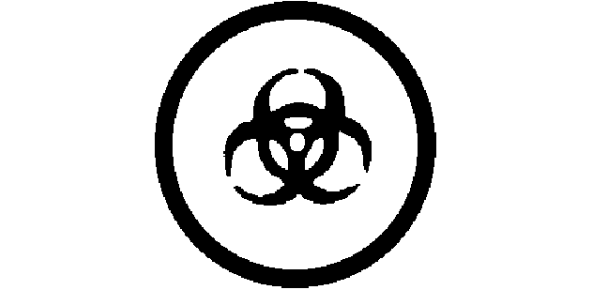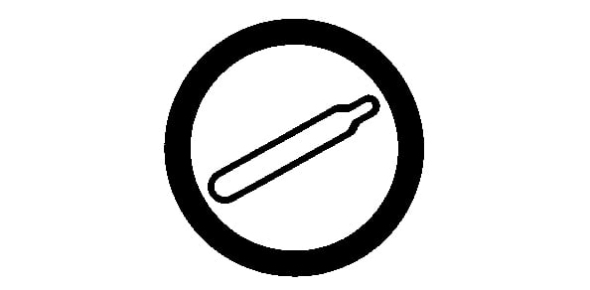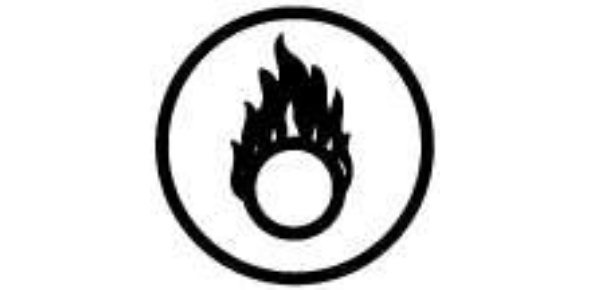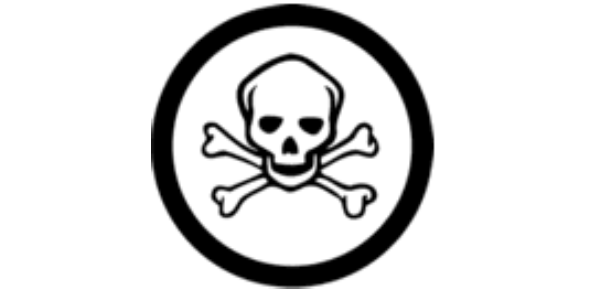Environmental Health And Safety - WHMIS Quiz

Workplace Hazardous Materials Information System (WHMIS) quiz.
Fill in the name of each symbol:
- 1.
Blood samples that have been contaminated by Hepatitis B viruses should be tagged with this symbol.
Explanation
Blood samples that have been contaminated by Hepatitis B viruses should be tagged with the symbol "biohazard" or "biohazardous material" because these symbols indicate the presence of a biological hazard or potentially infectious material. This helps to alert individuals who come into contact with the samples to take appropriate precautions to prevent the spread of the virus and protect themselves from potential infection.Rate this question:
- 2.
Heating or dropping could cause these cylinders of pressurized gas to explode.
Explanation
The terms "compressed gas" and "pressurized gas" both refer to gas that is stored at a high pressure in cylinders. When gas is compressed or pressurized, it increases the energy and potential for an explosion. Heating the cylinders can cause the gas inside to expand rapidly, leading to a potential explosion. Similarly, dropping the cylinders can cause a sudden release of pressure, which can also result in an explosion. Therefore, both "compressed gas" and "pressurized gas" accurately describe the type of gas that could explode under certain conditions.Rate this question:
- 3.
Industrial cleaners containing sodium hydroxide, a very corrosive base, should have this symbol on their label.
Explanation
Industrial cleaners that contain sodium hydroxide, a highly corrosive base, should be labeled with the symbol for corrosive or corrosive material. This symbol indicates that the cleaner has the potential to cause damage or destruction to materials or living tissues upon contact. It serves as a warning to users to handle the product with caution and take necessary safety precautions to avoid harm.Rate this question:
- 4.
The fact that most aerosol cans have propellants that can be ignited easily means that this symbol should be on their labels. Since it poses such a fire hazard a bottle of methanol would have this symbol on it's label.
Explanation
The explanation for the given correct answer is that both aerosol cans and a bottle of methanol are considered flammable. The fact that most aerosol cans have propellants that can be easily ignited indicates that they are highly flammable. Similarly, methanol, being a highly flammable liquid, poses a fire hazard. Therefore, both aerosol cans and a bottle of methanol should have the flammable symbol on their labels to indicate the potential fire risk.Rate this question:
- 5.
By releasing oxygen, can cause a flammable material to burn more easily.
Explanation
Oxidizing refers to a substance or material that has the ability to release oxygen, which can in turn cause other materials to burn more easily. An oxidizing material, therefore, is a substance that has the potential to promote or enhance the combustion of flammable materials by providing oxygen. This process is commonly used in industries where oxidizing agents are used to support combustion reactions or in the presence of flammable substances.Rate this question:
- 6.
This material could kill you if swallowed, inhaled, or absorbed through the skin.
Explanation
The material described in the question is labeled as "poisonous" because it can cause harm if swallowed, inhaled, or absorbed through the skin. Additionally, it is specified that the material has immediate effects, indicating that it can cause severe harm or even death shortly after exposure. Therefore, both "poisonous" and "poisonous with immediate effects" accurately describe the potential danger of the material.Rate this question:
- 7.
Some chemicals bearing this symbol can undergo a dangerous reaction if they come in contact with water.
Explanation
Chemicals that are labeled as "reactive" or "reactive material" can potentially undergo a dangerous reaction when they come into contact with water. This means that these substances have the ability to react vigorously or explosively when exposed to water, which can pose a serious safety hazard. It is important to handle and store reactive chemicals with caution to prevent any accidents or incidents.Rate this question:
- 8.
Chemicals in this devision won't kill you immediately, but could cause such unwelcome effects as birth deffects in your children or liver damage. A chemical that causes cancer after prolonged and repeated exposure would get this symbol on it's label.
Explanation
Chemicals in this division are harmful and can cause adverse effects, such as birth defects in children or liver damage. They may not cause immediate death but can have long-term consequences. The label "toxic" indicates that the chemical is harmful and can cause negative effects. "Toxic material" emphasizes that the substance is dangerous. "Toxic with long-term effects" specifically highlights that the chemical can lead to cancer after prolonged and repeated exposure.Rate this question:
- 9.
What procedure would you follow in the event of a chemical splash to your eye?
- A.
Flush your eye at the eye wash station for 10 minutes.
- B.
Flush your eye at the eye wash station for 15 minutes.
- C.
Flush your eye at the eye wash station for 15 minutes and then go to ER to been seen by a doctor.
Correct Answer
C. Flush your eye at the eye wash station for 15 minutes and then go to ER to been seen by a doctor.Explanation
In the event of a chemical splash to the eye, it is important to immediately flush the eye at the eye wash station for 15 minutes. This helps to remove the chemical from the eye and minimize any potential damage. After flushing, it is necessary to seek further medical attention by going to the emergency room to be seen by a doctor. This is important to ensure proper evaluation and treatment of any potential injuries or complications caused by the chemical splash.Rate this question:
-
- 10.
It is not necessary to wear eye protection when pouring a chemical. True or False?
- A.
True
- B.
False
Correct Answer
B. FalseExplanation
It is necessary to wear eye protection when pouring a chemical because chemicals can be hazardous and may cause harm if they come into contact with the eyes. Wearing eye protection, such as safety goggles, helps to prevent any potential injuries or damage to the eyes. Therefore, the statement that it is not necessary to wear eye protection when pouring a chemical is false.Rate this question:
-
Quiz Review Timeline +
Our quizzes are rigorously reviewed, monitored and continuously updated by our expert board to maintain accuracy, relevance, and timeliness.
-
Current Version
-
Jul 30, 2024Quiz Edited by
ProProfs Editorial Team -
May 16, 2012Quiz Created by
Cplommer
 Back to top
Back to top






.webp)



